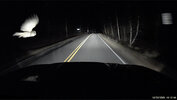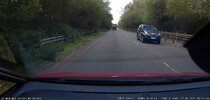HonestReview
Well-Known Member
- Joined
- Feb 9, 2019
- Messages
- 3,557
- Reaction score
- 790
- Country
- Sweden
I remember watching a documentary program about Police tactics. One of the programs showed a speedcam shot where the owner had installed these anti-flash plates that are normally impossible for speedcams to read, especially at night, so they fit them and speed through cameras.
The operator then just flipped the image into negative mode and there was the number, plain as day - gotcha
Mythbusters tested those anti-flash plates and proved they're nothing but garbage. None of them worked.


![113 км.ч.MP4_snapshot_02.48_[2020.12.09_21.46.19].png](/forum/data/attachments/58/58571-079685a1942a2c6b00260d1657f95d7f.jpg?hash=B5aFoZQqLG)



